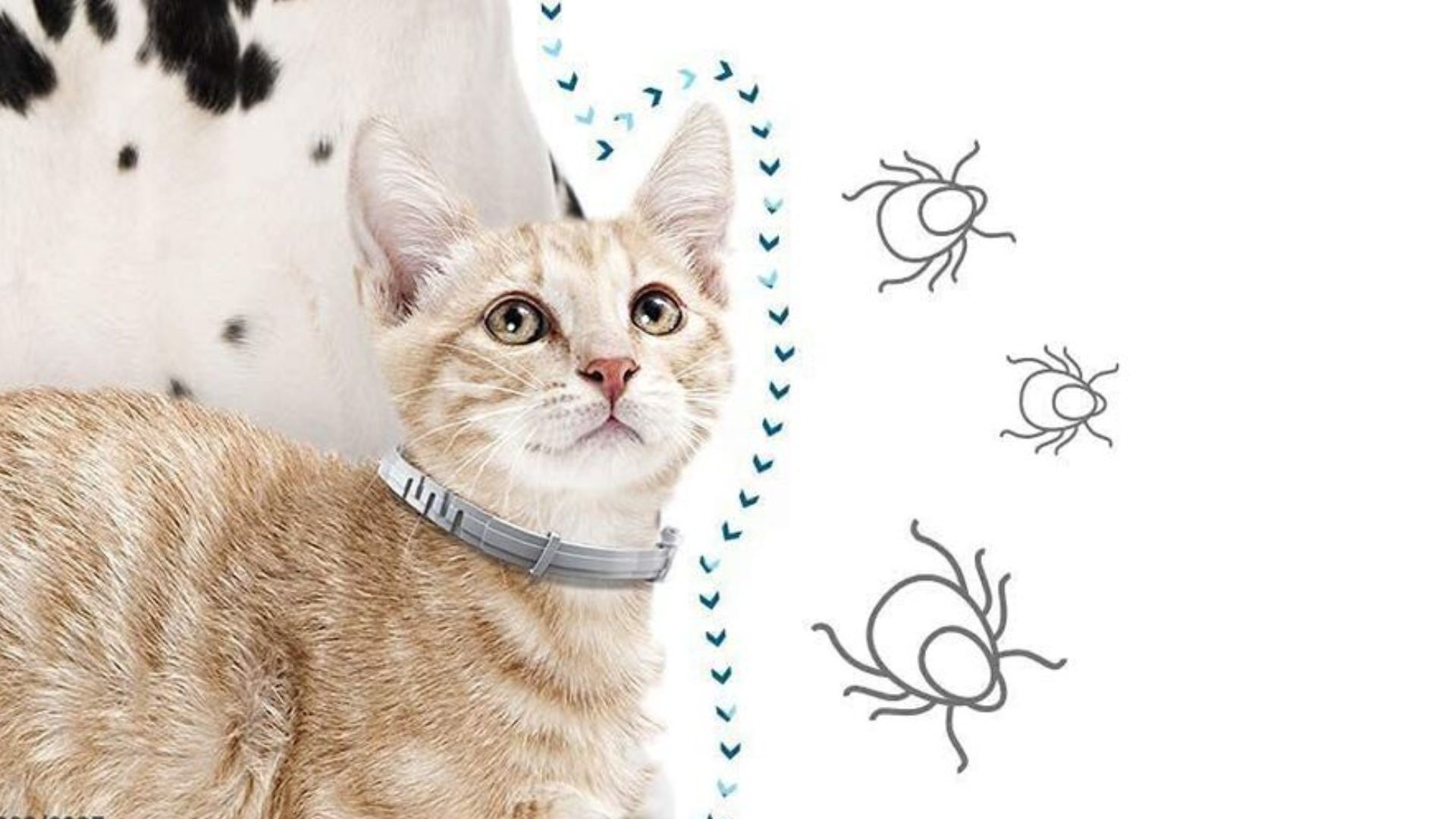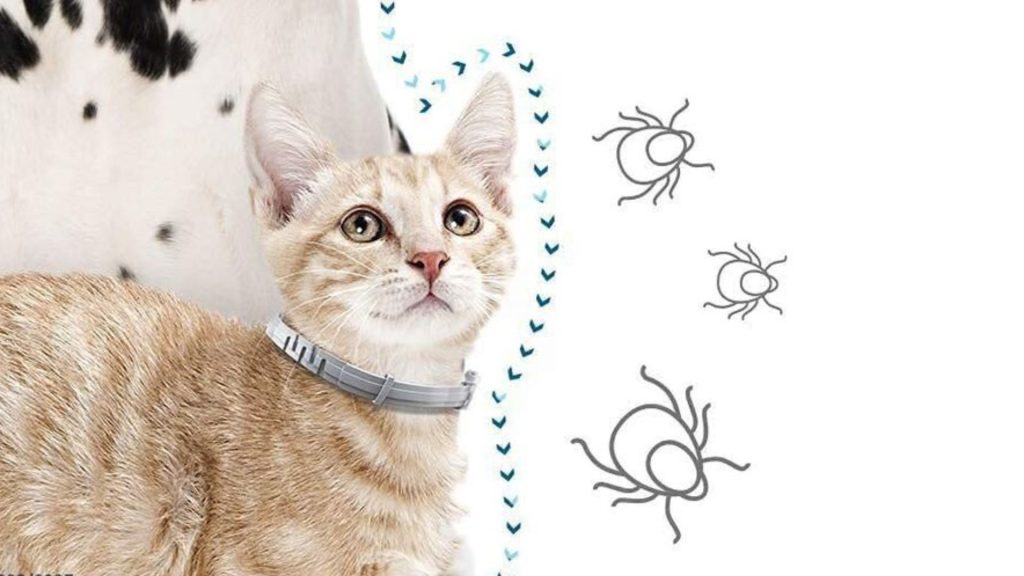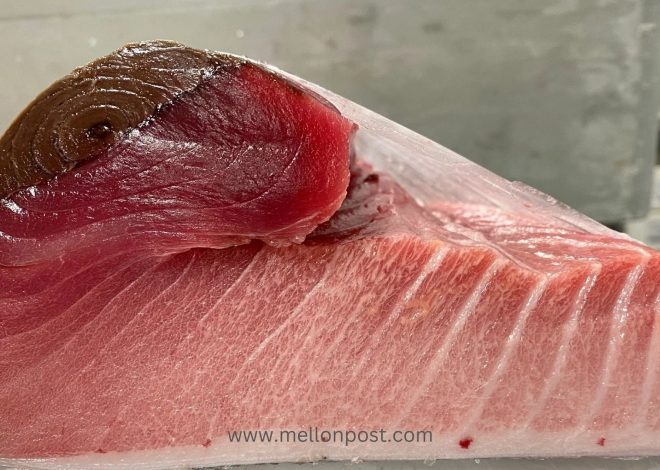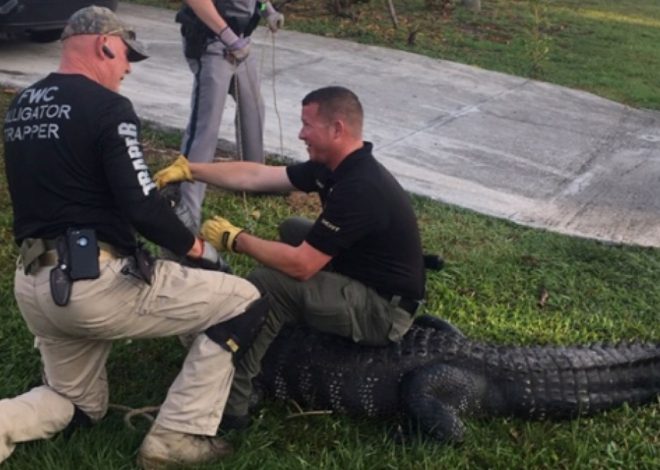
What is flea collars ?
Table of Contents
Flea collars are pet accessories designed to protect dogs and cats from fleas and ticks. These collars contain insecticides that are gradually released to kill and repel fleas, ticks, flea eggs, and larvae.
Flea collars are worn around the neck of the pet and provide long-lasting protection, typically up to several months, depending on the specific product. They are a convenient and effective way to prevent flea infestations and protect pets from the harmful effects of these parasites.
Different types of flea collars available for cats
The different types of flea collars available for cats include:
1. Solid Insecticide Collars: These collars contain a solid insecticide and resin mixture. As the collar wears away from rubbing against the cat’s skin and fur, the insecticide releases over time. The insecticide either disperses across the cat’s skin or absorbs into the top layers. The flea needs to contact the insecticide for it to take effect.
2. Liquid Insecticide Collars: These collars release a gas-like liquid insecticide preparation. These are most effective for repelling fleas but not killing them. Some ingredients, called adulticides, only kill adult fleas, while Insect Growth Regulators (IGRs) render adult fleas, eggs, and larvae sterile so they can’t reproduce.

Some popular flea collars for cats include
- Seresto Cat Vet-Recommended Flea & Tick Treatment & Prevention Collar for Cats: This collar offers up to 8 months of protection and uses all-natural essential oil ingredients. It is fully waterproof and adjustable to almost any size, with an emergency breakaway feature.
- Rolf Club Flea Collar for Cats: This collar is safe and effective against mosquitoes, ticks, and fleas for 8 months. It is non-toxic and contains natural materials, with no chemical odours or strong smells.
- Hartz Ultraguard Flea and Tick Collar For Cats: This collar uses a chemical called tetrachlorvinphos, which attacks the central nervous system of pests and can also destroy flea eggs. It provides protection to the cat’s coat for up to 7 months.
- Sergeant’s GUARDIAN® Flea & Tick Collar for Cats: This adjustable cat flea and tick collar kills adult fleas and ticks, features a water-resistant break-away collar, and starts working on contact. It is effective for up to 7 months.
These collars vary in their effectiveness, ingredients, and duration of protection. It is essential to choose a flea collar that is safe and effective for your cat and meets your specific needs.
The active ingredients in flea collars for cats
The active ingredients in flea collars for cats vary between products. Some flea collars use natural active ingredients, such as geraniol, peppermint, and thyme oil, which repel pests for up to 4 months.
On the other hand, some flea collars contain chemical ingredients, such as tetrachlorvinphos and (s)-Methoprene, which kill and repel fleas, ticks, flea eggs, and flea larvae for up to 7 months.
For example, the Seresto® collar contains 4.5% flumethrin and 10% imidacloprid, which slowly and continuously release over 8 months to repel and kill fleas and ticks in cats and kittens 10 weeks and older.
It is essential to choose a flea collar that is safe and effective for your cat and meets your specific needs. Always read the product label and follow the manufacturer’s instructions for use.
Pros and cons of using flea collars for cats
Pros
1. Long-lasting protection: Flea collars can provide protection for up to 8 months, making them a convenient and long-term solution for flea prevention.
2. Cost-effective: Flea collars are often a more affordable option compared to other flea treatments, such as topical solutions or oral medications.
3. Easy to use: Flea collars are easy to attach and replace, requiring minimal effort from the cat owner.
4. Waterproof options: Some flea collars are waterproof, allowing cats to continue their normal activities without worrying about the effectiveness of the collar.
5. Continuous protection: A collar is always around the cat’s neck, providing continuous protection against fleas.
6. Natural ingredient options: Some flea collars use natural ingredients, which can be a safer alternative for some cats.
7. Dual-purpose: Some flea collars also offer tick protection, providing an all-in-one solution for parasite prevention.
Cons
1. Chemical exposure: Some flea collars contain chemicals that can be harmful to humans, especially children, if they come in contact with them.
2. Irritation: The collar’s material may not be as elastic and breathable as required, leading to an irritated neck for the cat.
3. Limited coverage: Flea collars only protect the neck area, leaving the rest of the cat’s body vulnerable to fleas.
4. Not suitable for all cats: Some cats may have adverse reactions to flea collars, such as scratching, rubbing, sickness, or other abnormal behaviours.
5. Slow-acting: Flea collars may take longer to work compared to other flea treatments, such as topical solutions or oral medications.
6. Ineffective for severe infestations: Flea collars may not be effective for cats with severe flea infestations and may need to be used in conjunction with other treatments.
7. Potential for misuse: Flea collars can be misused, leading to contamination of surfaces that vulnerable individuals or animals may come in contact with.
How flea collars compare to other flea treatments for cats
Flea collars for cats are generally considered to be less effective than other flea treatments, such as flea medicine. While flea collars offer a convenient and long-lasting solution, they may not be as potent as medications like topical treatments or oral medications that contain powerful ingredients designed to eliminate fleas and their eggs, providing more robust and long-lasting protection against these pests.
Flea collars work by gradually releasing active ingredients over time to create a protective barrier around the pet’s neck, offering an alternative method of flea control with considerations such as duration of protection, fitting, and potential side effects.
However, the efficacy of flea collars can vary, and they may only repel fleas rather than kill them, especially natural collars. Chemical flea collars, on the other hand, can be more effective at killing fleas but may contain strong chemicals that could be harmful if ingested or if the collar irritates the cat’s skin.
In summary, while flea collars are easy to apply, long-lasting, and cost-effective, they may not provide the same level of effectiveness as other flea treatments like flea medicine, which contain potent ingredients designed to eliminate fleas and their eggs more effectively.
Continue reading: How can I tell if my cat is feeling anxious or stressed ?


